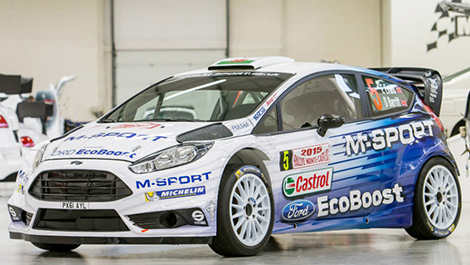Jan
7th
Stay connected Subscribe to our RSS feed
From wrc.com
After a cost-cutting freeze on development in 2014, this season's rules give manufacturers greater scope to improve their World Rally Cars.
The changes will be subtle rather than revolutionary, but at the sport's top level even the smallest detail can make a big difference.
In the cockpit, the most obvious change will be the reintroduction of steering wheel-mounted gearshift paddles, a system that replaces the 2014-spec sequential stick shift.
Under the skin, manufacturers can take advantage of a new supply of homologation ‘jokers', enabling them to make a limited number of mechanical changes to their homologated designs. There are changes too to the minimum weights of some components, allowing greater freedom to play with weight distribution and balance.
The first manufacturer to make full use of the regulations will be Volkswagen, which will introduce a new version of its championship-winning Polo at Rallye Monte-Carlo.
Citroen too will introduce changes at the opening round, with the DS3 getting a new engine, developed alongside its World Touring Car unit, new suspension and a paddle gearshift. Citroen plans two other evolutions during 2015, with an aero package scheduled for April and a second step with the suspension in the second half of the year.
M-Sport's Fiesta RS will have a modified pneumatic gearshift system in time for Monte Carlo. More changes are planned for Vodafone Rally de Portugal, where a new engine, transmission and new hydraulic gear selection system will make their debut.
Like M-Sport, Hyundai will start the season with an upgraded version of its 2014-season car, before an all-new model is introduced later in the year.
After a cost-cutting freeze on development in 2014, this season's rules give manufacturers greater scope to improve their World Rally Cars.
The changes will be subtle rather than revolutionary, but at the sport's top level even the smallest detail can make a big difference.
In the cockpit, the most obvious change will be the reintroduction of steering wheel-mounted gearshift paddles, a system that replaces the 2014-spec sequential stick shift.
 |
| The new livery of the Ford Fiesta RS WRCs for 2015 (Photo: M-Sport) |
Under the skin, manufacturers can take advantage of a new supply of homologation ‘jokers', enabling them to make a limited number of mechanical changes to their homologated designs. There are changes too to the minimum weights of some components, allowing greater freedom to play with weight distribution and balance.
The first manufacturer to make full use of the regulations will be Volkswagen, which will introduce a new version of its championship-winning Polo at Rallye Monte-Carlo.
Citroen too will introduce changes at the opening round, with the DS3 getting a new engine, developed alongside its World Touring Car unit, new suspension and a paddle gearshift. Citroen plans two other evolutions during 2015, with an aero package scheduled for April and a second step with the suspension in the second half of the year.
M-Sport's Fiesta RS will have a modified pneumatic gearshift system in time for Monte Carlo. More changes are planned for Vodafone Rally de Portugal, where a new engine, transmission and new hydraulic gear selection system will make their debut.
Like M-Sport, Hyundai will start the season with an upgraded version of its 2014-season car, before an all-new model is introduced later in the year.
 The latest auto news, reviews, prices, product and vehicle releases.
The latest auto news, reviews, prices, product and vehicle releases.